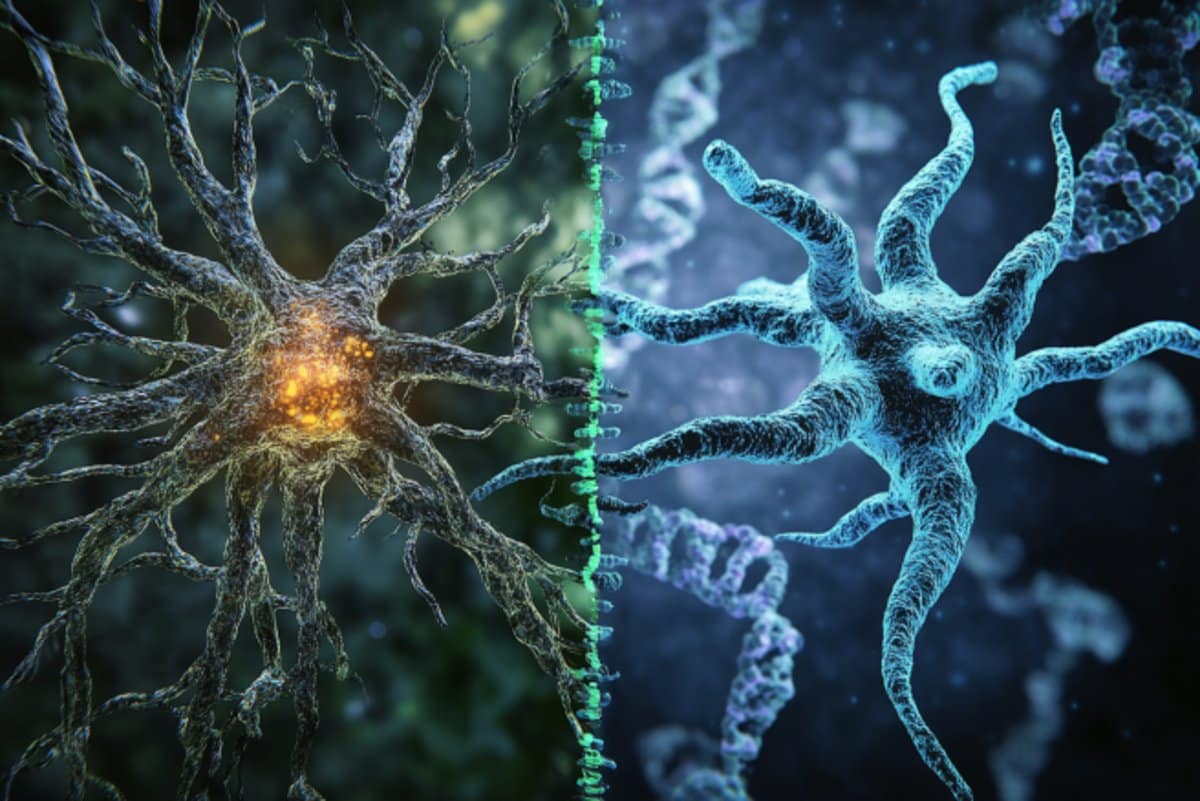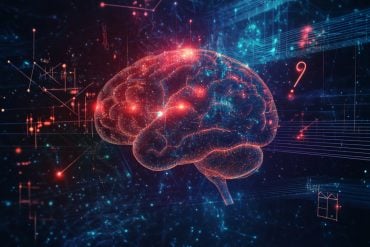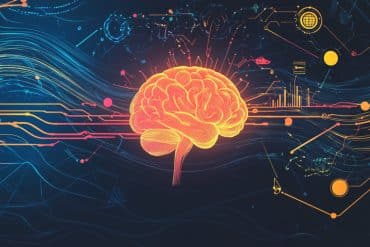Summary: A new study reveals that transplanting healthy human glial progenitor cells into adult mice with Huntington’s disease can delay motor and cognitive decline and extend lifespan. These support cells restored key neuronal functions, reversed synaptic damage, and reactivated gene expression even after symptoms began.
Traditionally seen as a neuron-centric disease, Huntington’s is now shown to involve critical dysfunction in glial cells, reshaping therapeutic possibilities. The findings open a promising path toward adult brain repair using glial-based therapies.
Key Facts:
- Beyond Neurons: Glial dysfunction contributes significantly to Huntington’s progression.
- Restorative Potential: Transplanted glia improved motor function, memory, and neuron structure.
- Adult Brain Repair: Benefits were seen even when treatment began after symptom onset.
Source: University of Rochester
Huntington’s disease has long defied attempts to rescue suffering neurons.
A new study in Cell Reports shows that transplanting healthy human glial progenitor cells into the brains of adult animal models of the disease not only slowed motor and cognitive decline but also extended lifespan.

These findings shift our understanding of Huntington’s pathology and open a potential path to cell-based therapies in adults already showing symptoms.
“Glia are essential caretakers of neurons,” said Steve Goldman, MD, PhD, co-director of the University of Rochester Center for Translational Neuromedicine and lead author of the study.
“The restoration of healthy glial support—even after symptoms begin—could reset neuronal gene expression, stabilize synaptic function, and meaningfully delay disease progression.
“This study shifts the perspective on Huntington’s from a neuron-centric view to one that shows a critical role for glial pathology in driving synaptic dysfunction. It also tells us that the adult brain still has the capacity for repair when you target the right cells.”
Huntington’s Disease: Beyond Neurons
Huntington’s disease is a hereditary brain disorder caused by a mutation in the huntingtin gene. This mutation leads to an abnormal protein that gradually damages nerve cells, particularly in a region called the striatum, causing movement problems, mood changes, and cognitive decline.
The scientific approach to this disease has traditionally focused on saving or replacing the affected neurons, but decades of research in the Goldman lab have shown that the brain’s support cells—called glia—play a crucial role in how the disease unfolds.
Once thought of as mere “glue” holding neurons in place, glia are now known to regulate neuronal health, control inflammation, and maintain the brain’s chemical balance. In Huntington’s, glia become dysfunctional and may contribute to neuronal damage.
By replacing diseased glia with healthy ones, scientists hope to restore the supportive environment neurons require to function properly, potentially preserving the nerve cells that are lost in the disease.
Transplanting Healthy Glia into Symptomatic Mice
Researchers used R6/2 mice, a well-established model of Huntington’s disease that develops motor and cognitive symptoms similar to those seen in people.
At five weeks old—when symptoms have just begun but before severe decline—these mice received injections directly into their striata of human glial progenitor cells, early-stage glia that can mature into different types of glial cells.
The mice were tested on tasks measuring coordination, movement, memory, and anxiety.
The team used single-nucleus RNA sequencing to see which genes were turned on or off in the treated mice’s neurons. They also labeled individual neurons with a modified rabies virus to visualize their branching (dendrites) and connection points (spines).
From Motor Improvements to Synaptic Restoration
The treated mice showed a clear delay in motor and cognitive deterioration and lived several weeks longer than untreated HD mice.
Neurons in R6/2 mice normally lose expression of genes involved in maintaining functional synapses, the connections between nerve cells. After glial transplant, many of these genes were effectively switched back on.
In addition, while the neurons in mice that model Huntington’s disease typically have fewer branches and spines, in Huntington’s mice given healthy glia, dendritic branching and spine density recovered to levels approaching normal.
“Even though treatment began after symptoms appeared, significant improvements were still seen—highlighting the potential for adult intervention,” said study co-author Abdellatif Benraiss, PhD, with the University of Rochester Medical Center.
“This study shows that focusing on glial health—in this case by transplanting healthy cells—can meaningfully impact disease progression, not just in newborn models but in adults already showing symptoms.”
Expanding and Refining Cell-Based Strategies
The researchers believe that transplanting healthy support cells could become part of a multi-pronged treatment strategy—either alone or alongside a gene-targeting approach. Future research will need to determine the optimal delivery, dosing and timing for this strategy.
Beyond that though, combining glial replacement with other therapies, such as lowering mutant huntingtin expression and replacing lost neurons, may yield even greater benefits.
“While mouse models don’t capture every aspect of human Huntington’s disease, these findings broaden the therapeutic landscape to include glial replacement or repair as an attractive potential treatment strategy,” said Goldman.
Additional co-authors include co-first authors Carlos Villanueva and Nguyen Huynh, as well as John N. Mariani, Benjamin Mansky, Ashley Tate, Signe Syshoj Lorenzen, and Devin Chandler-Militello with the Center for Translational Neuromedicine, which consists of labs at the University of Rochester and the University of Copenhagen.
Funding: The research was supported with funding from the Lundbeck Foundation, the Novo Nordisk Foundation, Sana Biotechnology, the National Institute on Aging, the CHDI Foundation, and the Huntington’s Disease Golf Classic.
About this Huntington’s Disease research news
Author: Mark Michaud
Source: University of Rochester
Contact: Mark Michaud – University of Rochester
Image: The image is credited to Neuroscience News
Original Research: Open access.
“Human glial progenitors transplanted into Huntington disease mice normalize neuronal gene expression, dendritic structure, and behavior” by Steve Goldman et al. Cell Reports
Abstract
Human glial progenitors transplanted into Huntington disease mice normalize neuronal gene expression, dendritic structure, and behavior
Neonatal glial replacement delays disease progression in mouse models of Huntington’s disease (HD), in which glial dysfunction is prominent.
Here, we ask if transplanting human glial progenitor cells (hGPCs) into adult R6/2 HD mice can ameliorate the phenotype, and how diseased host neurons are affected by healthy glia.
We find that the introduction of hGPCs into the striata of adult R6/2 HD mice indeed slows their motor and cognitive decline and extends survival.
Single-nucleus RNA sequencing (snRNA-seq) reveals that while genes associated with synaptic development and structure are downregulated in R6/2 striatal neurons, their transcription is partially rescued by healthy glia.
Rabies labeling reveals that while dendritic complexity and spine density are deficient in R6/2 striatal neurons, each is largely restored by hGPC engraftment.
These findings suggest that glial replacement in HD leads to partial normalization of neuronal gene expression, along with a restoration of dendritic complexity and delay in disease progression.






